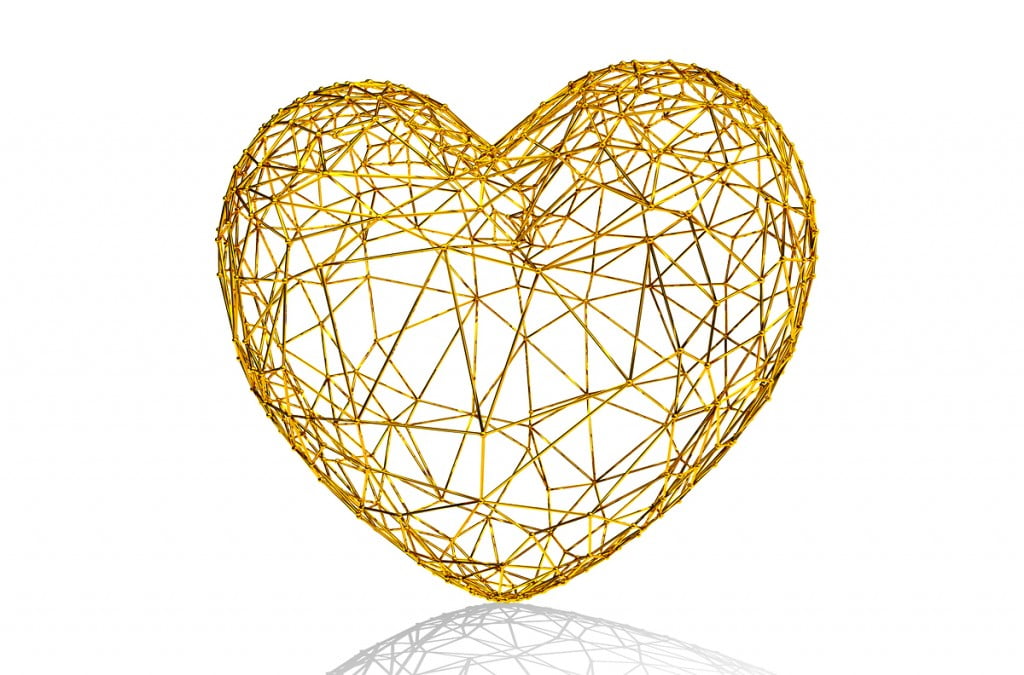Heart tissue sustains irreparable damage in the event of a heart attack, since cells in the heart cannot multiply and the cardiac muscle contains few stem cells. This means the heart becomes fibrotic and is unable contract properly.
Scientists at Tel Aviv University may have found a new method to restore heart function by using gold nanofibers (fibers with diameters less than 100 nanometers) in engineered heart tissue, not only optimizing circulation but literally engineering a heart of gold.
“Gold has been found to increase the connectivity of biomaterials”, explains researcher Dr. Tal Dvir. With the addition of the gold particles, cardiac tissues contract much faster and become stronger as a whole, he reports, making them more viable for transplants.
Related articles
- Israeli Researchers Use Skin Cells To Repair Damaged Hearts
- Minimally Invasive Treatment May Soon Be Possible For People With Mitral Regurgitation Disorder
The biggest challenge in the development of cardiac patches is ensuring that engineered tissue can mimic the heart’s coordinated electrical system, which controls the heartbeat and rhythm. To eliminate this obstacle, the researchers integrated cardiac cells with nanofibers made of gold particles to form functional engineered tissues. Their goal is to optimize electrical signaling between cells.
A foundation interlaced with gold
Another challenge in the development of cardiac patches is the process of tissue engineering. On their surface, heart cells contain proteins which are responsible for transferring electrical signals, but tissue engineering leads to the loss of these proteins. “While the cells will start to produce these proteins again naturally,” explains Dvir, “they take time to develop – time which a patient may not have. Until the cells are able to produce their own connectors once more, gold nanofibers can fill their role.”
New tissues are created by placing cells taken from patients or animals onto a three-dimensional scaffolding made of biomaterials — any matter or surface that interacts with biological systems — which organize the cells into the proper formation as they grow. Dvir and his team used various chemical and physical processes to integrate gold nanoparticles into their scaffolds. The cells then started interacting with each other through these gold nanoparticles.
Sign up for our free weekly newsletter
SubscribeCells placed on the gold-embedded scaffolding had significantly stronger contractions compared to those on a scaffolding without gold. Importantly, the cells contracted in unison, demonstrating effective electrical signaling between them.
Golden opportunity
Restoration of heart function remains a challenge in the medical field, with 50 percent of heart attack victims dying within five years of their initial attack, according to Dvir. A functioning, transplantable tissue could not only save lives, but improve a patient’s quality of life overall.
Dvir’s next step will be to evaluate the potential of these gold-infused cardiac patches to improve function after a heart attack through pre-clinical tests in the lab and, eventually, clinical trials with patients. He says that the ideal method would be to use a patient’s own cells when building the new tissue, therefore avoiding the risk of rejection.
The research was done by Dvir and his PhD student Michal Shevach of Tel Aviv University’s Department of Molecular Microbiology and Biotechnology and the Center for Nanoscience and Nanotechnology.
Photo: Golden heart as cage by Bigstock
Related posts

Israeli Medical Technologies That Could Change The World

Harnessing Our Own Bodies For Side Effect-Free Weight Loss

Missing Protein Could Unlock Treatment For Aggressive Lung Cancer




Facebook comments